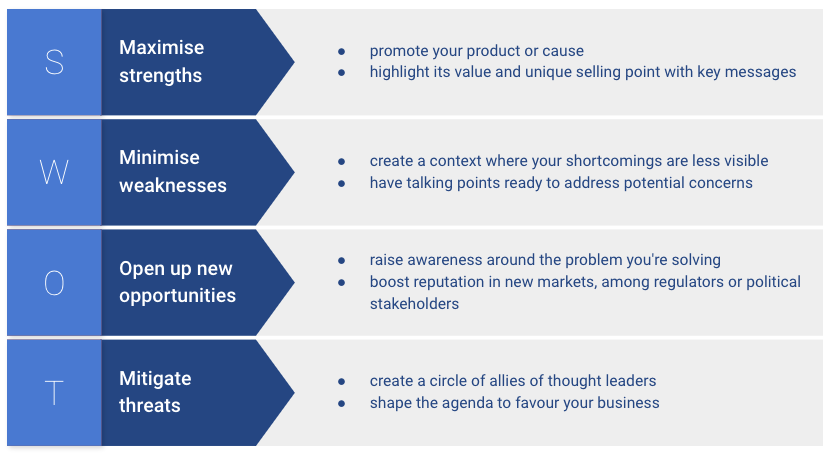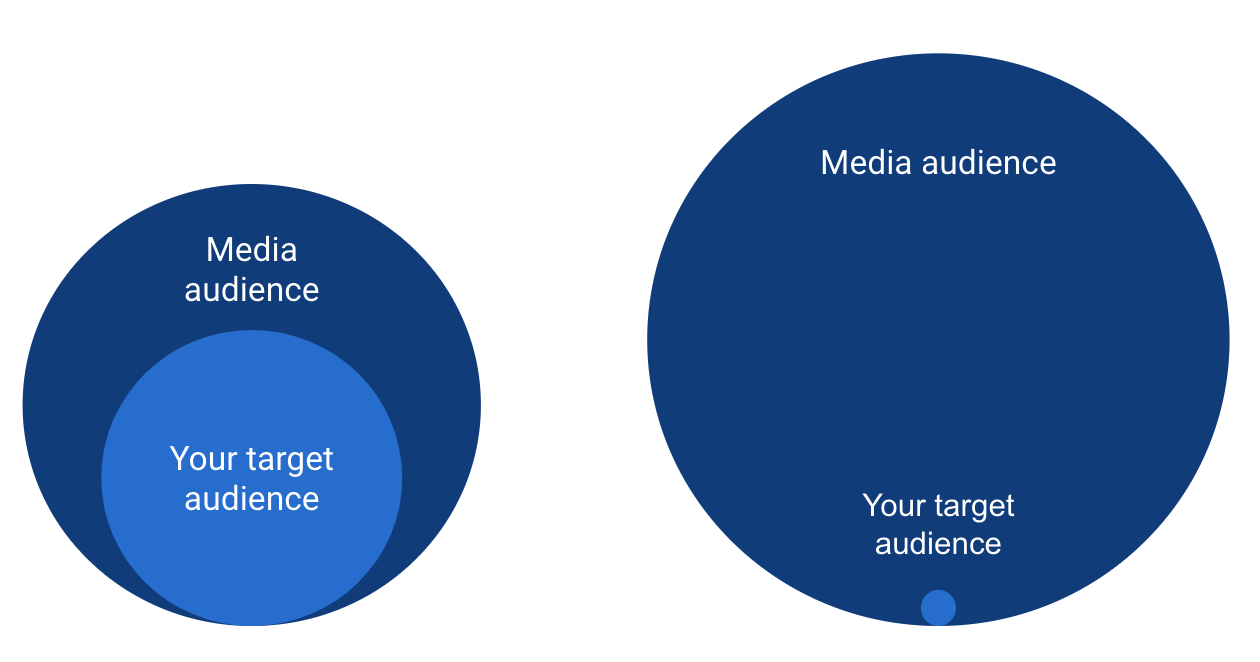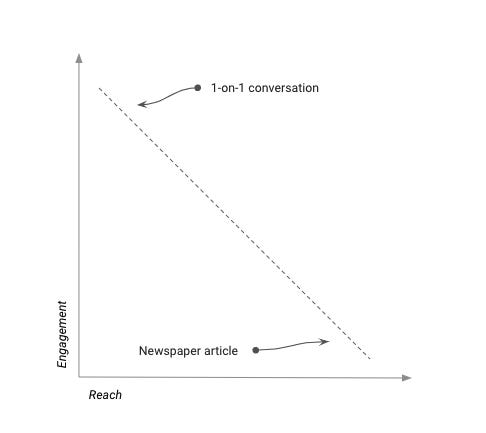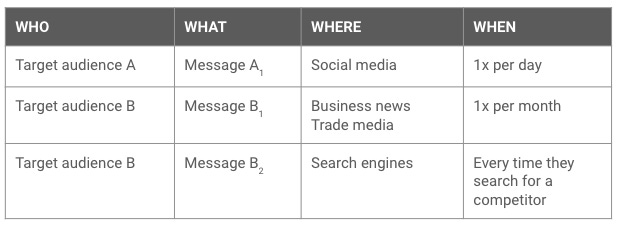
Discover more from Start-Up PR 102 by Marek Unt
The simplest communications strategy
Let’s talk about how to build a strategy that helps you achieve your goals.
Having a communications strategy means that you know:
What problem you're solving with communications.
What your message is.
Who you're talking to.
What channels you're using.
What problem are you solving?
Everything you do in communications is in service of the business or the organisation you work for.
Using a simple SWOT framework, these could be things to solve for:
maximising the strengths of your business, e.g. promoting your product or cause and highlighting its value and unique selling point with key messages
minimising the weaknesses of your business, e.g. as creating a context where your shortcomings are less visible, having talking points to address potential concerns
opening up opportunities for the business, e.g. raising awareness around the problem you're solving, boosting reputation in new markets, among regulators or political stakeholders
mitigating threats to the business, e.g. creating a circle of allies of thought leaders, shaping the agenda to favour your business
Try to go one level deeper than just saying "PR should bring in customers" or "PR should raise brand awareness".
The easiest way to do this is adding "by ..." to the example sentences, e.g. “PR should raise brand awareness via media coverage that highlights a major problem in society and how we’re fixing it”.
Being more specific helps you set better goals for your actions.
What's your message?
Use the message house framework to set up a hierarchy of messages - starting from the top or "the umbrella" and going down to proof-points that help your messages come alive.
Write them down in a messaging document, so you stay consistent.
If you don't know what your key messages are, try this process.
You can have different key messages for different projects. But the more your messages reinforce each other, the better.
Who are you talking to?
The better idea you have of your audience, the more you can customise your approach to them.
Different people care about different things. They have their own dreams and wishes as well as worries and fears. They also get their information from different channels.
Create personas for your audience, describing their habits around media consumption.
"Journalists" are not an audience. They are a proxy to your actual audience.
Suppose you find a media outlet that is an excellent fit with that audience. In that case, you and the outlet have a common interest - entertaining that audience.
In other words, if your audience is only 1% of the people reading that media outlet, it's likely irrelevant for them. (The exception being if there's something else that makes your story interesting for a broad audience).
But if your audience is 50% of the people of an outlet, that's a jackpot.
At the very minimum, figure out what media channels your audience prefers. Bear in mind that reach correlates inversely with engagement - the bigger the channel, the smaller the percentage of engaged audience members. This means that you should aim to get as close to your audience as possible.
This leads us to...
What channels should you use (and how often)?
Reach and engagement tend to be inversely correlated - the wider the reach, the lower the engagement. For example, talking to a person is low reach/high engagement. A TV appearance is high-reach/low-engagement.
If you have 10 potential buyers, don't build an elaborate PR strategy - get their contacts and call them (or use relevant sales techniques).
If you have 10 million potential buyers, use mainstream media outlets for extensive reach. If your product or cause is relevant to so many people, it will also be relevant to the media.
(Sidenote: There is no universal, ideal frequency for "doing PR". It depends on your message, audience and channels. Count total coverage numbers (mentions) if you need to. Still, it's more important to think about effective coverage - the number of pieces with the right message that landed in the right channel for your audience. A profile piece in a modest trade media outlet can be more valuable than a fleeting mention on a major news site.)
If you write content for earned channels (media), make sure to use it in your owned channels as well. An op-ed that didn't make the cut can still make a great blog post or a short video if suitably repurposed for the medium.
Your communications strategy blueprint
Let’s say you have two target audiences, A and B.
You have separate messages for each audience, and B’s message varies a little based on your channel.
Having gone through all the questions, you get to a blueprint like this:
Now, you’ve added a bit of structure to your communications activities.
Coming up with ideas that fit into your framework will ensure that you’re always strategically aligned with what your business needs from you.
To recap:
Know the problem you're solving with communications.
Know who you're talking to.
Know the message to these audiences
Know which channels you should be using for the message to land and how engaged you need to be.
I recently joined a new company called Grünfin. We’re trying to make investing easy for people who want to have a positive impact on the world.
If that’s something that speaks to you, sign up to our waitlist.












